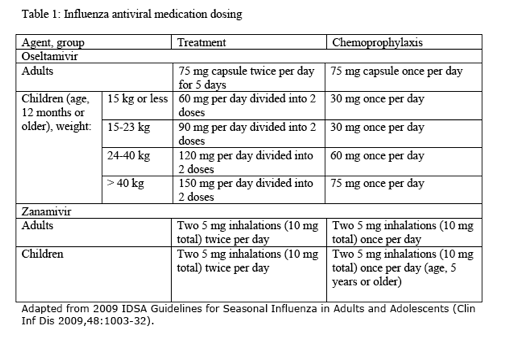| |
WHO Guidance for HIV Patient Care & Swine Flu
|
| |
| |
For the full WHO guidance for HIV patient care, see:
http://www.who.int/hiv/mediacentre/influenza_hiv.pdf
from Jules: I do not know if there are any potential drug-drug interactions between Tamiflu & HIV medications, or can I comment on any special mconsiderations regarding safety and adverse effects of Tamiflu for HIV+ individuals.
"Patients at higher risk for complications of influenza including those with HIV infection should be among those prioritized for antiviral treatment with oseltamivir or zanamivir which shortens illness duration and severity in seasonal influenza."
Considerations on influenza A(H1N1) and HIV infection
Considering the potential impact of emerging influenza A(H1N1) virus infection, HIV/AIDS programmes and services need to be aware of relevant risks and have plans for prevention and treatment.
There is no documented information on clinical interactions between HIV and influenza A(H1N1) virus, whose transmission, incubation period and clinical manifestations have generally been similar to those of seasonal influenza viruses. There is insufficient information on complications and spectrum of illness but complications are likely to be similar to those of seasonal influenza. Age and other groups with increased risk for complications of the current influenza A(H1N1) are under investigation.
Age and other groups with increased risk for complications of seasonal influenza include persons with immunodeficiency diseases, including HIV infection. The risk of mortality from seasonal influenza is increased among HIV-infected individuals compared with the general population. Studies have shown an increased risk for heart- and lung-related hospitalizations in people infected with HIV during influenza seasons as opposed to other times of the year, and a
higher risk of influenza-related death in HIV-infected people. Other studies have indicated that influenza symptoms might be prolonged and the risk of influenza-related complications higher for certain HIV-infected people. Therefore, HIV-infected persons should be considered as a high risk and a priority population for preventive and therapeutic strategies against influenza including emerging influenza A(H1N1) virus infection.
Influenza A(H1N1) viruses obtained from Mexico and the United States are sensitive to oseltamivir and zanamivir but not to amantadine and ramantadine. Patients at higher risk for complications of influenza including those with HIV infection should be among those prioritized for antiviral treatment with oseltamivir or zanamivir which shortens illness duration and severity in seasonal influenza. For seasonal influenza, maximum benefit is derived when
antiviral agents are started within 48 hours of onset of symptoms but benefit including reduction in mortality and duration of hospitalization may still result from later therapy. Standard treatment duration for seasonal influenza is 5 days, drug dosages being adjusted by weight (see Table 1). Non-steroidal anti-inflammatory drugs and other symptomatic therapy reduce discomfort, but aspirin should be avoided in children and pregnant women because of the risk of Reye's syndrome. Drug interactions between antiretroviral agents and oseltamivir or zanamivr have not been described to date.
There is at present no specific vaccine against influenza A(H1N1) but the general
recommendations for seasonal influenza immunization in HIV-infected individuals should be followed. The recommendations for seasonal influenza vaccination in HIV-infected persons are to vaccinate annually with the trivalent inactivated vaccine, irrespective of CD4 cell count, although individuals with advanced HIV disease may not mount an adequate antibody response to influenza vaccine. The use of live attenuated vaccines should be avoided. Contraindications to the use of inactivated influenza vaccine in persons with HIV infection are the same as those for persons without HIV infection.
If antiviral agents are in adequate supply, persons with HIV infection should be considered for post-exposure prophylaxis with oseltamivir or zanamavir, prophylaxis being continued for 10 days after the last known exposure to an ill or confirmed case. Post-exposure prophylaxis is recommended for HIV-infected persons who are household contacts of individuals with influenza A(H1N1).
Although there are inadequate data to predict the impact of a possible human influenza pandemic on HIV-affected populations, interactions between HIV/AIDS and A(H1N1) influenza could be significant. Country preparedness plans for influenza should address the needs of HIV-infected persons, and country HIV/AIDS plans, especially in high HIV prevalence countries, should consider public health action required in case of pandemic influenza.

Obs: Limited safety data on the use of oseltamivir (or zanamivir) are available for children less than one year of age, and oseltamivir is not licensed for use in children less than 1 year of age. The characteristics of human infections with influenza A(H1N1) viruses are still being studied, and it is not known whether infants are at higher risk for complications associated with influenza A(H1N1) infection compared to older children and adults. However, off label use of these drugs in children less than one year of age has been recently considered for a pandemic situation.
|
|
| |
| |
|
|
|